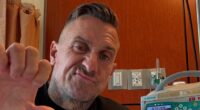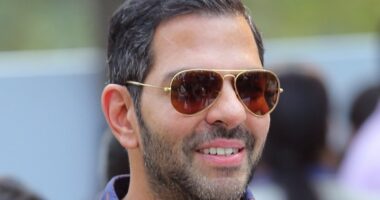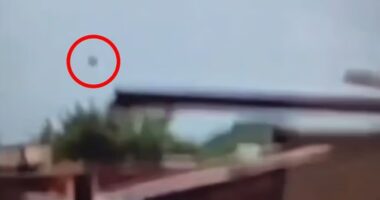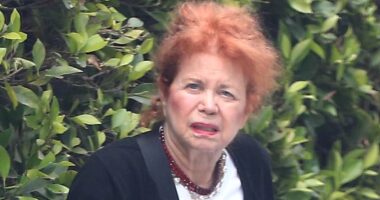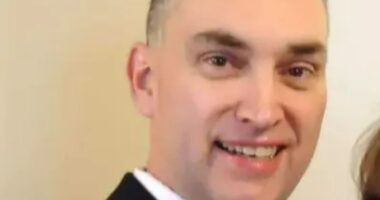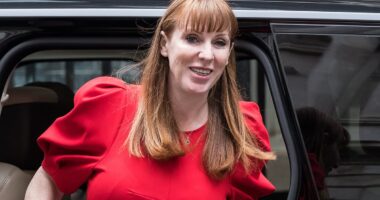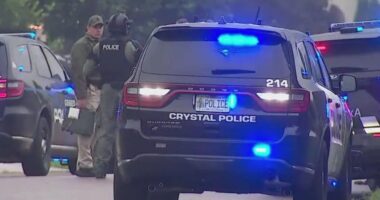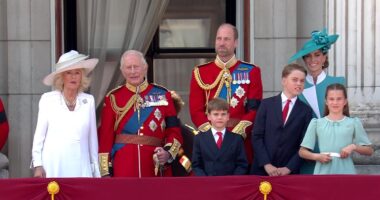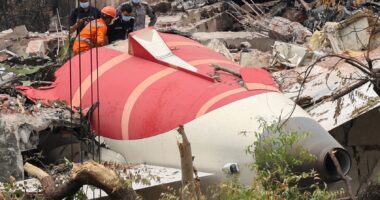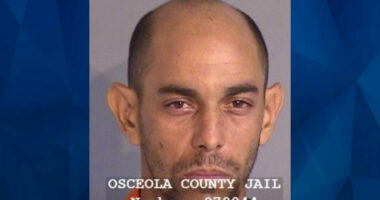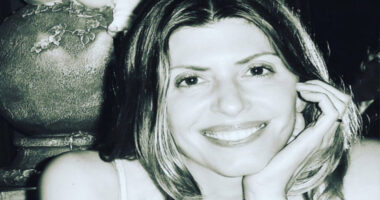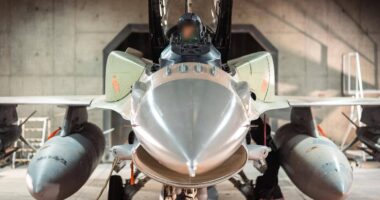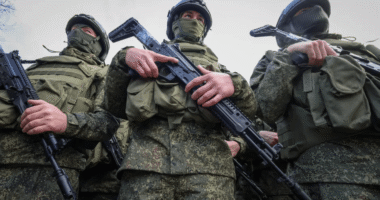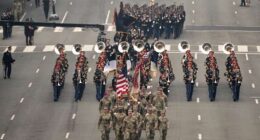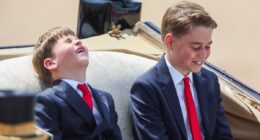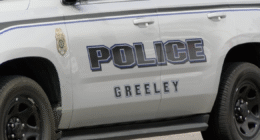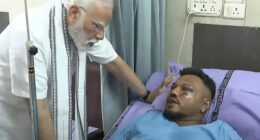Pope Leo XIV has been captured holding a baby and waving to gargantuan crowds as world leaders gather for his inauguration.
The bells of St. Peters Basilica chimed while Leo greeted onlookers from an open vehicle moving leisurely around the square and along the boulevard.




The crowd cheered “Viva il Papa” and waved plenty of Peruvian, American and Holy See flags representing Leo’s nationalities.
Flags from other nations were also seen, as well as banners and umbrellas to shield pilgrims from the sun.
Upon his arrival in Rome late on Saturday, US Vice President JD Vance visited the tomb of the Argentine pope and led the US delegation in paying tribute to Leo, who hails from Chicago.
The late Pope Francis had taken his last popemobile ride at the Vatican on Easter Sunday.
His casket was also taken on the back of the vehicle across Rome last month to its final resting place.
Security was incredible tight as civil protection crews in neon uniforms funneled pilgrims into quadrants in the piazza.
Priests were also rushed into St. Peter’s Basilica to get ready for the historical Mass.
Known as Father Bob, Prevost was announced as Pope Leo XIV on May 8 after less than 25 hours of voting in the Sistine Chapel in the Vatican.
Following the public procession in the square, Leo enters the basilica to commence the solemn rituals marking the beginning of his ministry, underscoring the important role he plays in guiding the Catholic Church.
He prays first at the tomb of St. Peter, considered to be the first pope, under the basilicas main altar and then processes out into the piazza for the Mass.



Strict diplomatic protocol dictates the seating arrangements, with both the United States and Peru getting front-row seats thanks to Leos dual citizenship.
Vance, a Catholic convert who tangled with Francis over the Trump administrations mass migrant deportation plans, is being joined by US Secretary of State Marco Rubio, who arrived in Rome ahead of time to try to advance Russia-Ukraine peace talks.
Peruvian President Dina Boluarte is one of around a dozen heads of state attending, as well as Ukrainian President Volodymyr Zelensky.
Russia is being represented by the culture minister, Olga Liubimova.
During the Mass, Leo will receive the two potent symbols of the papacy – the lambswool stole, known as a pallium, and the fishermans ring.
The pallium, draped across his shoulders, symbolizes the pastor carrying his flock as the pope carries the faithful.
The ring, which becomes Leos official seal, harks back to Jesus call to the apostle Peter to cast his fishing nets.
The other symbolically important moment of the Mass is the representational rite of obedience to Leo.
In the past all cardinals would vow obedience to the new pope, but more recent papal installations involve representatives of cardinals, bishops, priests, deacons, nuns, married couples and young people participating in the rite.
Another change from the past is that Sunday’s Mass isn’t a coronation ceremony, which used to involve the pope receiving a tiara, but is merely known as a Eucharistic Celebration for the start of the Petrine ministry of the Bishop of Rome.
Who is Pope Leo?
Prevost was born in Chicago in 1955 to immigrant parents of French, Italian and Spanish descent.
After graduating from Villanova University in Pennsylvania with a degree in maths, the future pontiff joined the Order of St Augustine, taking his vows in 1978.
He rose through the ranks of the Church to become appointed apostolic administrator in Peru by Pope Francis in 2014.
The pair were said to be close and Prevost was considered by Vatican insiders to be a potential kingmaker for the current election.
But few considered the new Leo XIV the likely winner of the secret vote.
Pope Francis brought Prevost to the Vatican in 2023 to serve as the powerful head of the office that vets bishop nominations from around the world, one of the most important jobs in the Catholic Church.
And in January he elevated him into the senior ranks of cardinals.
The last pope to take the name Leo was Leo XIII, an Italian who led the church from 1878 to 1903.


